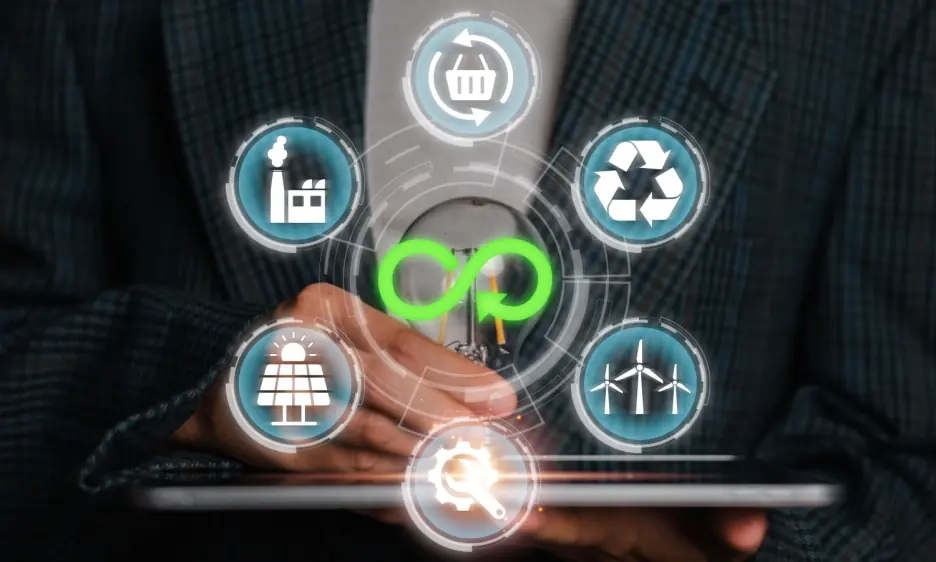As natural resources become more limited, companies are being forced to reconsider their business models and strategies. Circular business models provide several key benefits including economic resilience, revenue streams from services offered, design for longevity, reducing waste production, and economic resilience.
Switching to circularity requires an adjustment in mindset, product design and material choice – and this guide aims to assist designers during this journey.
Defining the Circularity Gap
Circular business models aim to reduce material consumption and greenhouse gas emissions by keeping products in use as long as possible, employing modularity and easy repair to extend product lifespan, thus eliminating replacements altogether. Companies employing this forward-thinking model offer repair services or encourage consumers to upgrade products instead of purchasing brand new versions – thus cutting waste while decreasing natural resource demands.
Reaching a circular economy requires companies to set goals and adopt metrics to monitor progress towards them. These could include commitments such as using specific percentages of recycled input when designing products or offering service-based business models such as leasing or refurbishment that extend product lifespan while creating additional revenue streams.
As part of your initial step, it is necessary to identify any barriers which impede design-implementation gaps for circular business models by evaluating your own company’s current state and performance compared with these principles. You can do this by exploring aspects like product design, procurement and raw material selection, manufacturing processes and end-of-life management.
Identifying the Circularity Gaps
As with any innovation, it is crucial to start small and gradually build your strategy over time. Doing this will enable you to gain buy-in from key stakeholders while not overstretching resources.
Initial steps toward creating circularity strategies should begin by recognizing any gaps in your business model that inhibit this goal. Once identified, strategies that support your company goals may follow.
An example of a gap is not providing an efficient take-back loop for reusable products or packaging. Another gap may result from failing to offer services to refurbish, repair and remake products that can then be sold with “like new” warranties.
This research’s objective was to gain new insights into how macro-level barriers impact design-implementation gaps related to circularity at a micro level and derive managerial implications. This was accomplished using action research as it allows researchers to navigate themselves through the design and implementation processes for circular business models themselves, thus creating new theory through experiential knowledge gained first-hand.
Developing Circularity Gap Strategies
Circular business models facilitate waste reduction and resource conservation by encouraging reuse, repair, recycling and upcycling. Furthermore, these models encourage economic resilience through service revenue streams such as service repairs or leasing/pay-per-use systems that extend product lifespans.
Economic, environmental and social benefits from climate action can be considerable; but realizing them requires moving beyond ambitions and targets to taking concrete actions that can be taken today.
This toolkit seeks to aid businesses on their journey by making it simpler to understand and navigate the circular economy opportunity. It helps companies identify any barriers they face, as well as actions they can take to overcome them. To achieve this aim, an action research methodology – using an iterative process to explore business cases while gathering participants together throughout – allows the toolkit to do its work more hands on while developing lessons applicable more widely down the road.
Developing Circularity Gap Actions
Establishing a circular economy requires action on multiple fronts. While macro-level barriers, such as policy, finance and labour constraints may exist, the real difficulty lies in changing our ways of doing business, by adopting innovative models which keep materials out of landfill for as long as possible instead of extracting them once from Mother Earth and recycling them over and over.
Here, the design aspect becomes vital: forward-thinking companies are creating products with repairability in mind and readily available spare parts – thus decreasing product replacement needs while encouraging sustainable patterns of consumption.
At the same time, they are focused on the “value creation” dimension – using renewable, non-scarce and less toxic raw materials in manufacturing processes and designing products with appropriate end-of-life strategies – while at the same time optimising transportation channels to minimise greenhouse gas emissions and environmental impacts.


